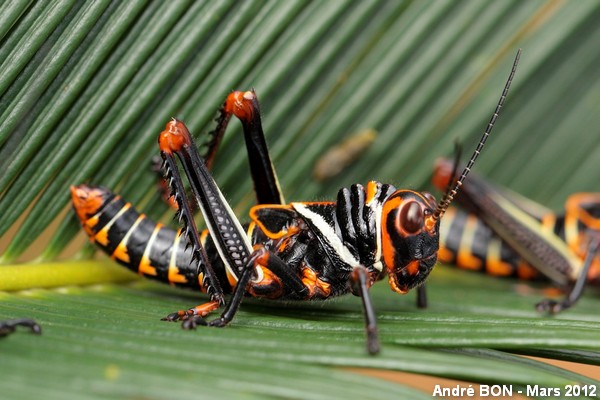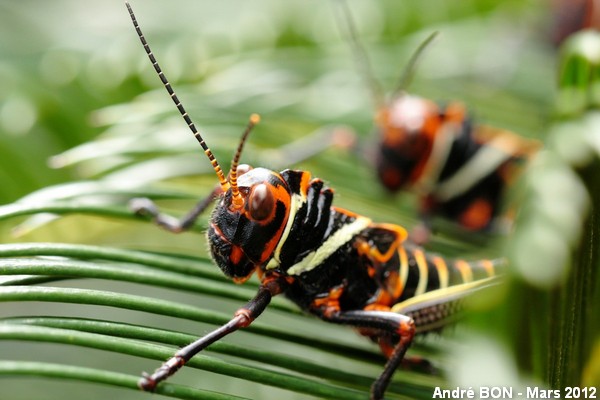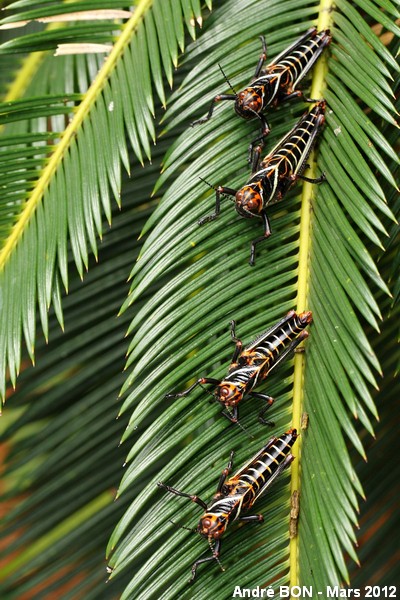


| Violet-winged Grasshopper (Tropidacris collaris (Stoll, 1813)) |



|
|
Scientific name: Tropidacris collaris (Stoll, 1813) Common name: Violet-winged Grasshopper French name: Criquet géant à ailes bleues Order: Orthoptera Family: Romaleidae Wingspan : Length: 90-127mm; Wingspan: up to 178 mm. This is one of the largest grasshoppers in the world. Biotope: Various habitats, humid forest, cultivated areas, dry meadows. Geographic area: Central America, South America east of the Andes, from south-eastern Mexico down to central Argentina. Observation period : |
The adult Violet-winged Grasshopper are green or brown sometimes a little reddish. The head may have traces of pink, yellow, red and brown. The hind legs have white spots on their sides. The elytra are spotted and slightly longer than the abdomen. The upper side of the abdomen is reddish. The membranous wings are pale blue or pale green and spotted with black next to the margin. Juveniles, which cross five or six stages before becoming adults, show totally different colours. They are first black and after get red marks, then yellow or white. The proliferation of Violet-winged Grasshoppers can sometimes cause damages to cultivated plants. |
| [To know more about the Violet-winged Grasshopper] [Next picture] [Top] |

|
I have shot this picture in a garden in Rémire Montjoly. This juvenile grasshopper is at one of the last development stage. |
| [To know more about the Violet-winged Grasshopper] [Next picture] [Previous picture] [Top] |

|
There is no need to go hiking through the primary forest to observe beautiful insects, you can find some in the garden. |
| [To know more about the Violet-winged Grasshopper] [Previous picture] [Top] |

|
During my two-weeks stay in French Guyana, I have observed these four grasshoppers on the same plant each time I was back to my base camp in Rémire Montjoly. |